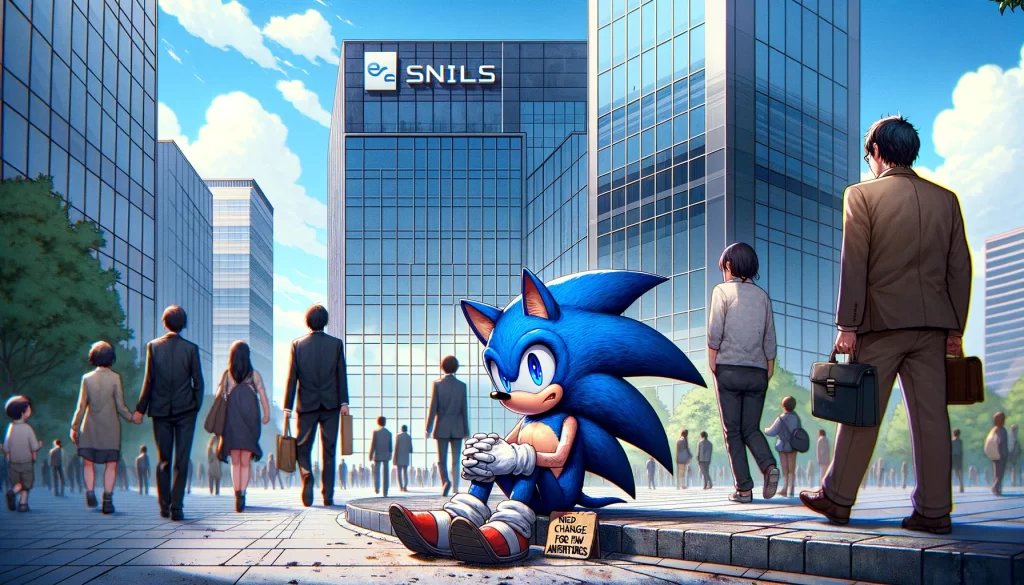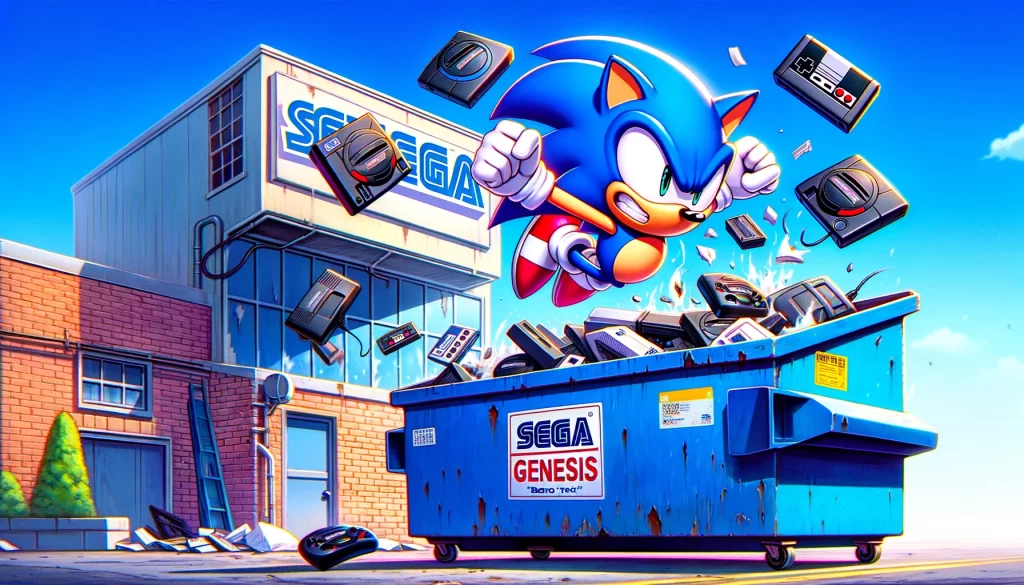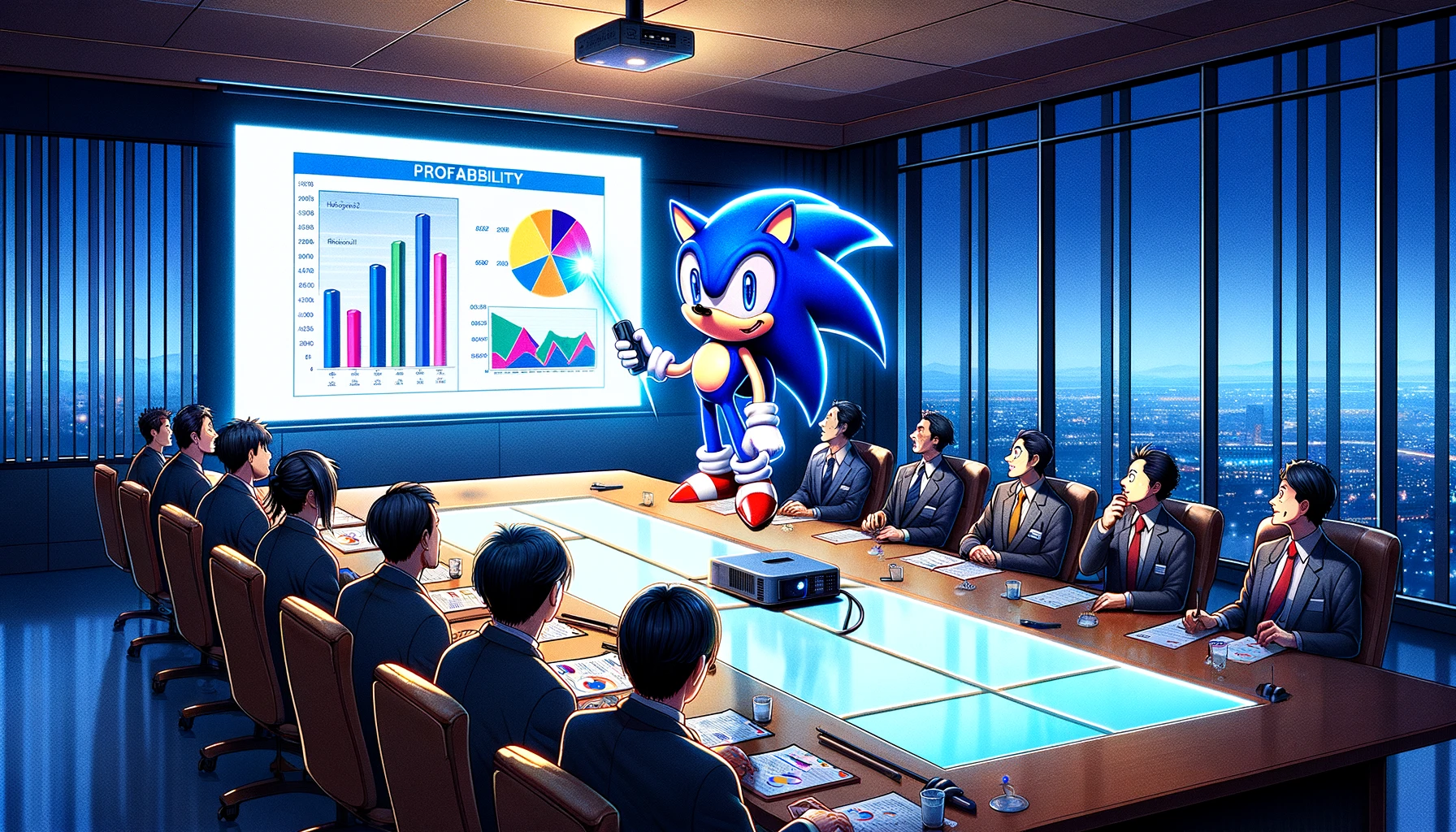Sega, once a titan in the gaming industry, known for its cutting-edge consoles and captivating games, has transitioned away from console manufacturing to focus on software development. This strategic pivot raises the question: why did Sega stop making consoles? The answer involves a complex interplay of market dynamics, financial challenges, and strategic realignments.
Key Takeaways
| Aspect | Detail |
|---|---|
| Market Competition | Sega faced stiff competition from Sony and Nintendo, impacting its market share. |
| Financial Losses | The Dreamcast, despite being innovative, did not achieve expected sales, leading to significant financial losses. |
| Strategic Shift | Sega decided to focus on software development, leveraging its strong game franchises. |
| Legacy | Sega’s consoles have left a lasting legacy in the gaming industry, influencing current gaming trends. |
Sega’s journey from a console manufacturer to a software-centric company is a tale of adaptation and resilience in the ever-evolving gaming industry. Despite the cessation of console production, Sega’s impact on gaming is indelible, with its innovative technologies and beloved game franchises still influencing the industry today.
The Competitive Landscape
In the realm of console gaming during the late 1980s and throughout the 1990s, Sega emerged as a formidable competitor, challenging industry giants with its innovative hardware and captivating game titles. The Sega Genesis/Mega Drive, in particular, became a household name, symbolizing Sega’s golden era of console gaming. This period was characterized by a fierce rivalry with Nintendo, leading to a marketing war that captivated gamers worldwide. Sega’s aggressive advertising campaigns, which boldly declared “Genesis does what Nintendon’t,” highlighted the intense competition of the era. For an in-depth look at how these strategies played out, Sega’s marketing impact on the Genesis/Mega Drive offers detailed insights.
However, the gaming landscape began to shift dramatically with the entry of Sony’s PlayStation in the mid-1990s. The PlayStation introduced groundbreaking 3D graphics and a CD-ROM format, which allowed for greater storage capacity than the cartridge systems used by Sega and Nintendo. This technological leap enabled developers to create more complex and visually stunning games, setting a new standard for the industry. Sony’s strategic partnerships with game developers and its effective marketing strategies quickly amassed a vast library of games, attracting a wide audience and shifting the balance of power.
Sega attempted to counter Sony’s rise with the Sega Saturn, but the console struggled due to its high price, complex architecture, and a lack of strong third-party developer support. These challenges were compounded by internal struggles within Sega and a hurried launch that caught both consumers and developers off guard. The Saturn’s difficulties in gaining a foothold in the market underscored the challenges Sega faced in maintaining its competitive edge against not only Sony but also Nintendo, which continued to innovate with the Nintendo 64.
The competitive pressures from Sony and Nintendo revealed the harsh realities of the console market’s evolving dynamics. Sega’s initial success with the Genesis/Mega Drive had been a high point, but the landscape was now dominated by new technology and shifting consumer preferences. This environment set the stage for the eventual release of the Sega Dreamcast, Sega’s final attempt at reclaiming its position in the console market. Despite the Dreamcast’s innovative features, such as internet connectivity for online gaming—a pioneering move at the time—it was ultimately unable to reverse Sega’s fortunes in the face of overwhelming competition.
The story of Sega’s rise and retreat in the console market is a testament to the rapidly changing nature of the gaming industry, where innovation, strategic partnerships, and market perception can significantly influence a company’s success. As Sega navigated these turbulent waters, its experiences underscored the critical importance of adapting to new technological advancements and consumer expectations, lessons that continue to resonate within the industry today.

Financial Struggles and the Dreamcast
Sega’s financial turmoil became particularly pronounced with the advent of the Sega Saturn, but it was the Dreamcast’s market performance that truly underscored the company’s dire straits. Launched in 1999, the Dreamcast was hailed for its cutting-edge features, including built-in modem for internet connectivity and online gaming, a bold innovation at the time. Despite these advancements and a strong lineup of launch titles, the Dreamcast faced an uphill battle from the outset.
The financial struggles Sega encountered were multifaceted. The Saturn, Dreamcast’s predecessor, had underperformed in key markets, particularly in North America and Europe, leading to a significant erosion of Sega’s financial reserves. This was compounded by the high development and manufacturing costs associated with the Dreamcast, as well as the aggressive pricing strategies Sega adopted in an attempt to capture market share from its competitors.
Moreover, the Dreamcast’s launch coincided with growing anticipation for Sony’s PlayStation 2, which boasted superior hardware specifications and was backed by Sony’s vast resources. The PlayStation 2’s ability to play DVDs, coupled with Sony’s extensive third-party developer support, positioned it as not just a gaming console but a multimedia entertainment unit. This broad appeal significantly impacted consumer interest in the Dreamcast, which struggled to match the hype surrounding its rival.
Despite achieving early sales success and receiving critical acclaim for its innovative features and game titles, the Dreamcast’s momentum was short-lived. Sega reported significant financial losses, with the Dreamcast’s sales unable to offset the costs associated with its development and marketing. These losses were a continuation of Sega’s financial difficulties from the Saturn era, leading to a cumulative effect that strained the company’s resources.
The decision to discontinue the Dreamcast in 2001, less than two years after its launch, marked a pivotal moment for Sega. Faced with unsustainable financial losses and the daunting prospect of competing against well-funded rivals like Sony and Nintendo, Sega made the strategic decision to exit the console market. This move signaled the end of an era for Sega as a console manufacturer and initiated the company’s transition towards becoming a software-focused entity. The Dreamcast’s legacy, however, remains significant; it is remembered as a console that was ahead of its time, introducing features that would become standard in future generations, such as online gaming. Despite its financial failure, the Dreamcast’s innovative spirit epitomizes Sega’s contribution to the gaming industry and its willingness to push technological boundaries.

Strategic Realignment
In response to these challenges, Sega made a strategic pivot, ceasing console production to focus on software development. This shift allowed Sega to capitalize on its strong portfolio of game franchises, such as Sonic the Hedgehog, and establish itself as a leading game developer and publisher. The transition is highlighted in our look at the Sega Game Gear, an example of Sega’s innovative but ultimately overshadowed hardware.
The decision to cease console production marked a significant pivot in Sega’s corporate strategy, transitioning from a hardware manufacturer to a software-centric entity. This shift was not merely a retreat from the console wars but a strategic realignment towards areas where Sega saw potential for growth and sustainability. The realization that the company could leverage its rich portfolio of intellectual properties and extensive experience in game development to thrive in a new role was pivotal.
Sega’s strategic realignment involved capitalizing on its iconic franchises, such as Sonic the Hedgehog, by developing games for platforms manufactured by its former rivals. This approach allowed Sega to tap into a broader market, reaching gamers regardless of the console they owned. The shift was underscored by Sega’s quick move to develop titles for the PlayStation 2, Xbox, and Nintendo GameCube, effectively transforming from a competitor to a third-party developer for these platforms.
This transition was not without challenges. Sega had to navigate the complexities of developing for multiple platforms, each with its unique hardware specifications and developer ecosystems. Additionally, the company needed to rebuild relationships with the gaming community and establish new partnerships with other console manufacturers, a significant shift from its previous position as a direct competitor.
However, the strategic realignment also presented opportunities. Sega was able to focus on what it did best: creating compelling and innovative video games. Freed from the financial burdens associated with hardware production, Sega could allocate more resources to game development, exploring new genres and gameplay mechanics. This period saw the release of critically acclaimed titles and the revival of classic franchises, showcasing Sega’s enduring creativity and expertise in game design.
Moreover, Sega’s transition to software development allowed for greater flexibility in responding to market trends and consumer preferences. By becoming a platform-agnostic developer, Sega could reach a wider audience, ensuring its games were accessible to gamers on any device. This adaptability has been crucial in maintaining Sega’s relevance in the rapidly evolving gaming industry.
The strategic realignment also reflected a broader trend in the gaming industry, where content increasingly became king. Sega’s pivot underscored the importance of strong game franchises and the intellectual property value in driving success in the gaming market. By focusing on leveraging its iconic characters and beloved game series, Sega managed to reinvent itself, securing a place in the industry’s future.
In essence, Sega’s strategic realignment from hardware manufacturer to software developer was a bold move that reflected both the challenges and opportunities within the gaming industry. This transition allowed Sega to capitalize on its strengths, adapt to changing market dynamics, and continue to innovate and entertain gamers around the world, solidifying its legacy as a pioneer and a resilient force in the world of gaming.

Sega’s Legacy and Influence
Despite withdrawing from the console market, Sega’s legacy endures. The company’s contribution to the gaming industry, from pioneering online gaming with the Dreamcast to creating iconic game franchises, continues to influence current gaming trends. Sega’s history of innovation is celebrated in retrospectives of its forgotten franchises and the exploration of rare Sega Saturn games, which showcase the depth and diversity of Sega’s console library.
In conclusion, Sega’s decision to stop making consoles was driven by a combination of market pressures, financial difficulties, and a strategic decision to focus on its strengths in game development. This transition has allowed Sega to remain a significant player in the gaming industry, proving that even in the face of adversity, adaptation and innovation can pave the way for enduring success. Sega’s journey from a hardware manufacturer to a software powerhouse underscores the dynamic nature of the gaming industry and highlights the importance of flexibility and strategic planning in navigating market shifts.
Sega’s withdrawal from the console market did not signify the end of its influence on the gaming industry. Instead, Sega’s legacy has endured, continuing to shape gaming culture and technology. The company’s innovative approach to console design, game development, and online connectivity laid the groundwork for many of the features that are now standard in the gaming world. Sega’s foray into online gaming with the Dreamcast, for example, was a visionary move that predated the widespread adoption of internet connectivity in consoles. This pioneering spirit showcased Sega’s commitment to pushing the boundaries of what was possible in gaming, influencing subsequent console generations to integrate online functionalities as a core feature.
Moreover, Sega’s game franchises have remained beloved by fans and influential among developers. Titles such as Sonic the Hedgehog have become cultural icons, transcending the gaming medium to appear in cartoons, movies, and merchandise. Sega’s dedication to creating engaging and innovative gameplay experiences has inspired countless game developers, fostering a legacy of creativity and innovation that persists.
Sega’s impact on the gaming industry extends beyond its hardware contributions. The company’s shift to software development and its ability to adapt to changing market dynamics underscore the importance of flexibility and innovation in the gaming industry. Sega’s journey from a console manufacturer to a respected game developer illustrates the transformative power of strategic adaptation, ensuring that its legacy continues to influence the evolution of gaming. Sega’s enduring presence in the industry serves as a testament to its pioneering spirit, underscoring the company’s significant role in shaping the gaming landscape.
